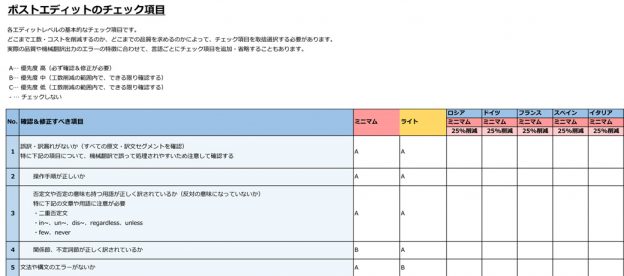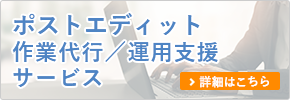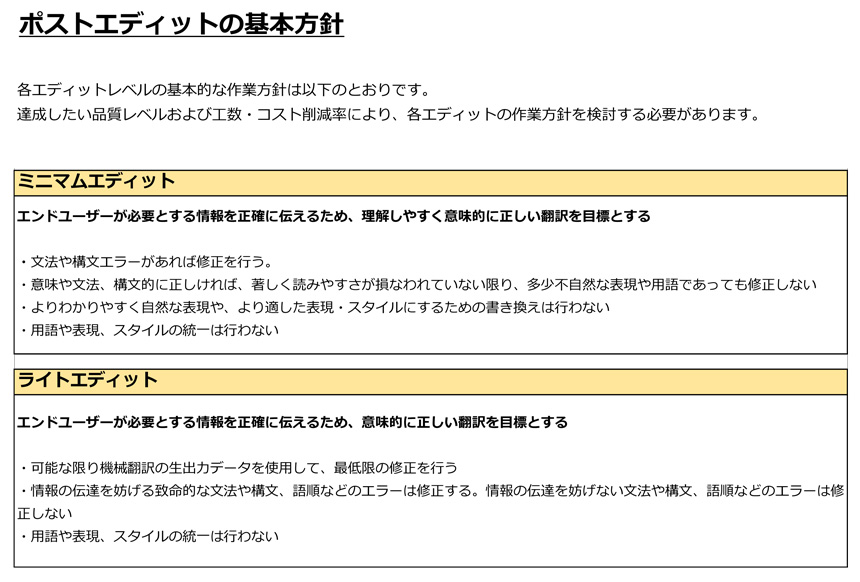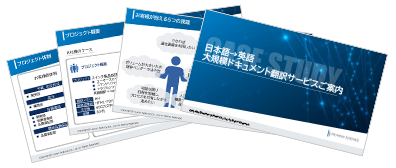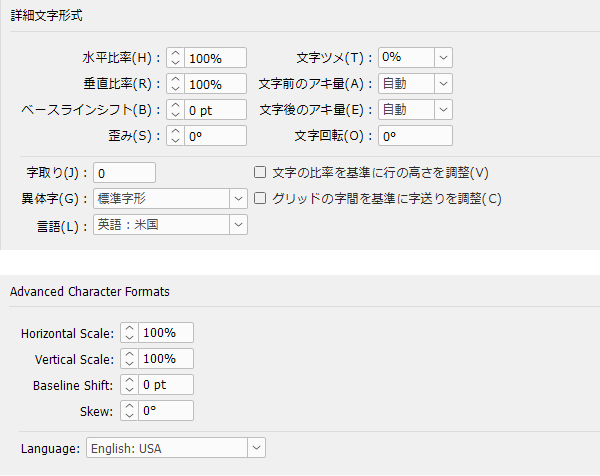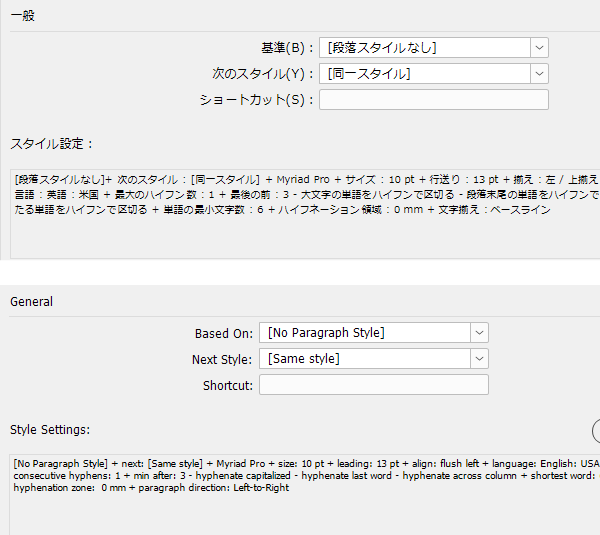Previously, we introduced the process of human refinement of machine-translated texts called
"post-editing."
I explained that "it is important to decide the level of corrections for each project,"
but this time, I would like to introduce the aspects of corrections in post-editing
in more detail while showing actual examples.
▼Previous Article
Know-How: Quality, How Much Do You Demand? Post-Editing Design Standards
●3 Editing Levels
Even when we say to brush up the translation, we must not make modifications blindly.
It is important to make corrections at a necessary and sufficient level, in line with the target quality standards.
Post-editing involves categorizing the degree of modifications into several levels,
and determining the level to apply according to the target quality.
Below, we introduce the three levels of categorization that our company adopts as a basis.
Rapid Edit
・Perspective: Whether the original meaning is accurately conveyed
・Workload compared to human translation: 10-50%
Minimum Edit
・Criteria: Whether the original meaning is accurately conveyed, whether the expression is easy to read, and whether the grammar is correct
・Workload compared to human translation: 50-80%
[Full Edit]
・Criteria: Whether the original meaning is accurately conveyed, whether the expression is easy to read, whether the grammar is correct,
Whether the terminology and style are consistent
・Workload compared to human translation: 70-100%
The workload compared to human translation varies depending on the quality immediately after machine translation.
Here, let's show you the difference in translation quality based on editing levels with actual example sentences.
When this English was machine translated, it produced some strange Japanese.
<Original Text>
When removing the cover, in order to maintain cleanliness and prevent the build up of dust,
be sure to remove and clean the filter panel first.
↓
<Translated Text (Immediately after Machine Translation)>
To maintain cleanliness and prevent the buildup of dust, when removing the cover,
you must first remove and clean the filter panel.
Here are the results of the modifications made to this Japanese text at the three levels mentioned above.
【Rapid Edit】
To maintain cleanliness and prevent dust accumulation, when removing the cover,
it is essential to first remove the filter panel and clean it.
[Minimum Edit]
To keep it clean and prevent dust accumulation, always remove the filter panel first and clean it when removing the cover.
[Full Edit]
To keep it clean and prevent dust accumulation, always remove the filter panel first when taking off the cover, and clean it.
Rapid Edit only corrects completely nonsensical expressions such as, "prevent dust from rising" and
expressions that are not typically used, such as "remove the cover."
In minimum edits, we consider readability and change "maintain cleanliness" to "keep clean," and
change "in case of removal" to "when removing," making the expressions more natural.
In full editing, we also ensure consistency with glossaries, style guides, and other texts.
In this example sentence, we changed "filter panel" to "filter-panel" according to the glossary,
and made modifications to adjust user actions to imperative form in accordance with the style guide and existing translations.
●Verification Results of Translation Quality by Engine
By raising the edit level, you should understand that the quality of the translation will also improve.
However, it is important to carefully assess the balance between quality and cost.
While raising the edit level will indeed improve quality, it will also increase costs.
If post-editing takes more time and cost than human translation,
there is no point in implementing machine translation.
It is crucial to check in advance how much refinement is necessary against the target quality standards,
and whether the associated costs will fit within the budget.
In this instance, we introduced the main points of correction at three levels,
but what specifically needs to be checked at each edit level
must be set for each project according to the desired quality.
Furthermore, to stabilize the quality of post-editing,
it is also necessary to establish guidelines and educate post-editors.
At Human Science, we propose check items for post-editing in line with quality standards,
and we also assist with the development of guidelines and the training of post-editors.
Please feel free to contact us.
Related Services
Post-Editing Support Tool MTrans Post-Edit Booster
Automatically corrects machine translation-specific errors to streamline post-editing tasks!
Scheduled Machine Translation Seminar
We hold machine translation seminars every month.
If you would like to receive seminar announcement emails, please register using the button below.
Related Articles
[Know-How] Quality, how much is required? Design standards for post-editing
[Know-How] What abilities are required of a post-editor?
[Know-How] International standards for post-editing (ISO 18587)

